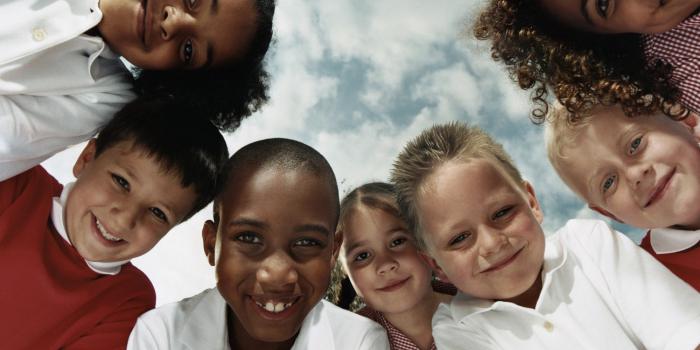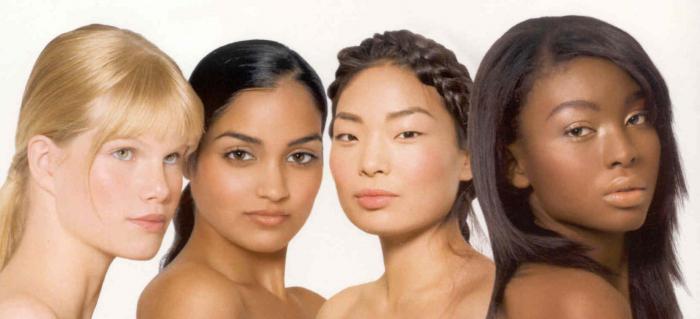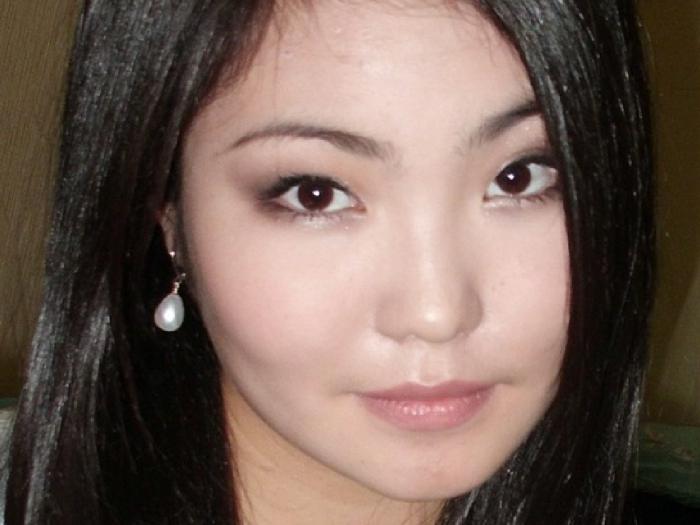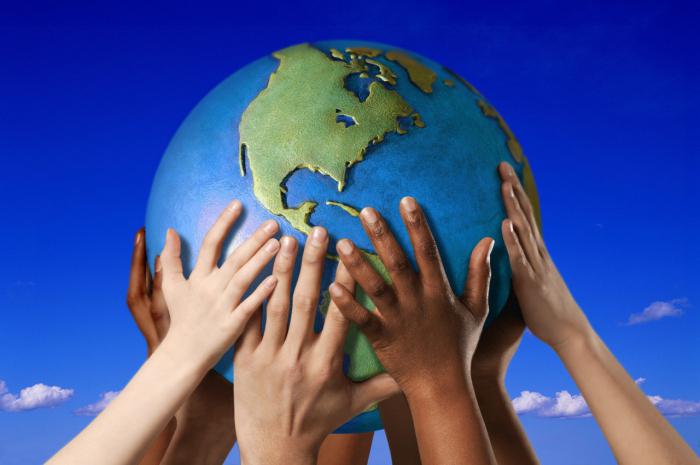Races of people (photo). Modern races of people on the planet and their origin
The population of our planet is so diverse that one can only be surprised. What kind of nationalities, nationalities you will not meet! Everyone has their own faith, customs, traditions, orders. Its beautiful and unusual culture. However, all these differences are formed only by the people themselves in the process of social historical development. And what underlies the differences that appear externally? After all, we are all very different:
- blacks;
- yellow-skinned;
- white;
- with different eye colors
- various heights, etc.
It is obvious that the reasons are purely biological, independent of the people themselves and formed by evolution over thousands of years. This is how the modern races of man were formed, which theoretically explain the visual diversity of human morphology. Let us consider in more detail what this term is, what is its essence and meaning.
The concept of "race of people"
What is a race? It is not a nation, not a people, not a culture. These concepts should not be confused. After all, representatives of different nationalities and cultures can freely belong to the same race. Therefore, the definition can be given such as the science of biology gives.
Human races are a set of external morphological features, that is, those that are the phenotype of a representative. They were formed under the influence of external conditions, the impact of a complex of biotic and abiotic factors, and were fixed in the genotype during evolutionary processes. Thus, the signs that underlie the division of people into races should include:
- growth;
- skin and eye color;
- structure and shape of hair;
- hairiness of the skin;
- features of the structure of the face and its parts.
All those signs of Homo sapiens as a biological species that lead to the formation of the external appearance of a person, but do not affect his personal, spiritual and social qualities and manifestations, as well as the level of self-development and self-education.
People of different races have a completely identical biological springboard for the development of certain abilities. Their general karyotype is the same:
- women - 46 chromosomes, that is, 23 pairs of XX;
- men - 46 chromosomes, 22 pairs XX, 23 pairs - XY.
This means that all representatives of a reasonable person are one and the same, among them there are no more or less developed, superior to others, higher. From a scientific point of view, everyone is equal.
Types of human races, formed over about 80 thousand years, have an adaptive value. It is proved that each of them was formed in order to provide a person with the possibility of a normal existence in a given habitat, to facilitate adaptability to climatic, relief and other conditions. There is a classification showing which races of Homo sapiens existed before, and which are at the present time.

Race classification
She is not alone. The thing is that until the 20th century it was customary to distinguish 4 races of people. These were the following varieties:
- Caucasian;
- australoid;
- negroid;
- Mongoloid.
For each, detailed characteristic features were described by which any individual of the human species could be identified. However, later the classification became widespread, which includes only 3 human races. This became possible due to the unification of the Australoid and Negroid groups into one.
Therefore, the modern types of human races are as follows.
- Large: Caucasoid (European), Mongoloid (Asian-American), Equatorial (Australian-Negroid).
- Small: many different branches that were formed from one of the large races.
Each of them is characterized by its own characteristics, signs, external manifestations in the appearance of people. All of them are considered by anthropologists, and the science itself that studies this issue is biology. Human races have interested people since ancient times. Indeed, completely contrasting external features often became the cause of racial strife and conflict.
Genetic studies of recent years allow again to talk about the division of the equatorial group into two. Consider all 4 races of people who stood out earlier and have become relevant again recently. We note the signs and features.

australoid race
Typical representatives of this group include the indigenous people of Australia, Melanesia, Southeast Asia, and India. Also the name of this race is Australo-Veddoid or Australo-Melanesian. All synonyms make it clear which minor races are included in this group. They are the following:
- australoids;
- veddoids;
- Melanesians.
In general, the characteristics of each group represented do not vary too much among themselves. There are several main features that characterize all small races of people of the Australoid group.
- Dolichocephaly - an elongated shape of the skull in relation to the proportions of the rest of the body.
- Deep-set eyes, wide slit. The color of the iris is predominantly dark, sometimes almost black.
- The nose is wide, the bridge of the nose is pronounced flat.
- The body hair is very well developed.
- The hair on the head is dark in color (sometimes natural blonds are found among Australians, which was the result of a once-fixed natural genetic mutation of the species). Their structure is rigid, they can be curly or slightly curly.
- The growth of people is average, often above average.
- The physique is thin, elongated.
Within the Australoid group, people of different races differ from each other sometimes quite strongly. So, a native of Australia can be a tall blonde with a dense build, with straight hair, with light brown eyes. At the same time, the Melanesian will be a thin, short dark-skinned representative who has curly black hair and almost black eyes.
Therefore, the general features described above for the entire race are only an average version of their cumulative analysis. Naturally, miscegenation also takes place - a mixture of different groups as a result of natural crossing of species. That is why it is sometimes very difficult to identify a particular representative and attribute him to one or another small and large race.
Negroid race
The people who make up this group are the settlers of the following territories:
- Eastern, Central and Southern Africa;
- part of Brazil;
- some peoples of the USA;
- representatives of the West Indies.
In general, such races of people as Australoids and Negroids used to unite in the equatorial group. However, research in the 21st century has proved the failure of this order. After all, the differences in the signs shown between the designated races are too great. And some similarities are explained very simply. After all, the habitats of these individuals are very similar in terms of the conditions of existence, therefore, the adaptations in appearance are also close.
So, the representatives of the Negroid race are characterized by the following signs.
- Very dark, sometimes blue-black, skin color, as it is especially rich in melanin content.
- Wide eye slit. They are large, dark brown, almost black.
- The hair is dark, curly, coarse.
- Growth varies, often low.
- The limbs are very long, especially the arms.
- The nose is wide and flat, the lips are very thick, fleshy.
- The jaw is devoid of a chin protrusion and protrudes forward.
- Ears are large.
- Facial hair is poorly developed, beard and mustache are absent.
Negroids are easy to distinguish from others by external data. Below are the different races of people. The photo reflects how clearly Negroids differ from Europeans and Mongoloids.

Mongoloid race
Representatives of this group are characterized by special features that allow them to adapt to rather difficult external conditions: desert sands and winds, blinding snow drifts, and so on.
Mongoloids are the indigenous people of Asia and much of America. Their characteristic features are as follows.
- Narrow or slanting eyes.
- The presence of epicanthus - a specialized skin fold aimed at covering the inner corner of the eye.
- The color of the iris is light to dark brown.
- characterized by brachycephaly (short head).
- Superciliary ridges thickened, strongly protruding.
- Sharp high cheekbones are well defined.
- The hairline on the face is poorly developed.
- The hair on the head is coarse, dark in color, of a straight structure.
- The nose is not wide, the bridge of the nose is low.
- Lips of different thickness, usually narrow.
- Skin color varies in different representatives from yellow to swarthy, there are also light-skinned people.
It should be noted that another characteristic feature is short stature, both in men and women. It is the Mongoloid group that prevails in numbers, if we compare the main races of people. They populated almost all climatographic zones of the Earth. Close to them in terms of quantitative characteristics are Caucasians, which we will consider below.

Caucasian race
First of all, we will designate the predominant habitats of people from this group. This:
- Europe.
- North Africa.
- Western Asia.
Thus, representatives unite the two main parts of the world - Europe and Asia. Since the living conditions were also very different, then the general signs are again an average option after analyzing all the indicators. Thus, the following features of appearance can be distinguished.
- Mesocephaly - medium head in the structure of the skull.
- Horizontal section of the eyes, absence of strongly pronounced superciliary ridges.
- Narrow protruding nose.
- Lips of different thickness, usually of medium size.
- Soft curly or straight hair. There are blondes, brunettes, brown-haired.
- Eye color from light blue to brown.
- Skin color also varies from pale, white to swarthy.
- The hairline is very well developed, especially on the chest and face of men.
- The jaws are orthognathic, that is, slightly pushed forward.
In general, a European is easy to distinguish from others. Appearance allows you to do this almost unmistakably, even without using additional genetic data.
If you look at all the races of people, the photo of whose representatives is located below, then the difference becomes obvious. However, sometimes the signs are mixed so deeply that the identification of an individual becomes almost impossible. He is able to belong to two races at once. This is further aggravated by intraspecific mutation, which leads to the appearance of new traits.
For example, Negroid albinos are a special case of the appearance of blonds in the Negroid race. A genetic mutation that disrupts the integrity of racial traits in a given group.

Origin of human races
Where did such a variety of signs of the appearance of people come from? There are two main hypotheses that explain the origin of human races. This:
- monocentrism;
- polycentrism.
However, none of them has yet become an officially accepted theory. According to the monocentric point of view, initially, about 80 thousand years ago, all people lived in the same territory, and therefore their appearance was approximately the same. However, over time, growing numbers have led to a wider settlement of people. As a result, some groups found themselves in difficult climatic conditions.
This led to the development and fixation at the genetic level of some morphological adaptations that help in survival. For example, dark skin and curly hair provide thermoregulation and a cooling effect on the head and body in Negroids. And the narrow cut of the eyes protects them from sand and dust, as well as from blinding by white snow among the Mongoloids. The developed hairline of Europeans is a kind of thermal insulation in severe winters.
Another hypothesis is called polycentrism. She says that different types of human races descended from several ancestral groups that were unevenly settled around the globe. That is, there were initially several foci, from which the development and consolidation of racial characteristics began. Again, under the influence of climatic conditions.
That is, the process of evolution proceeded linearly, simultaneously affecting aspects of life on different continents. This is how the formation of modern types of people from several phylogenetic lines took place. However, it is not necessary to state for sure about the viability of this or that hypothesis, since there is no evidence of a biological and genetic nature, at the molecular level.
Modern classification
The races of people according to the estimates of current scientists have the following classification. Two trunks stand out, and each of them has three large races and many small ones. It looks like this.
1. Western trunk. Includes three races:
- Caucasians;
- capoids;
- negroids.
The main groups of Caucasians: Nordic, Alpine, Dinaric, Mediterranean, Falian, East Baltic and others.
Minor races of capoids: Bushmen and Khoisans. They inhabit South Africa. In the fold above the eyelids, they are similar to the Mongoloids, but in other ways they differ sharply from them. The skin is not elastic, which is why the appearance of early wrinkles is characteristic of all representatives.
Groups of Negroids: Pygmies, Nilots, Negroes. All of them are settlers of different parts of Africa, therefore they have similar signs of appearance. Very dark eyes, the same skin and hair. Thick lips and no chin protrusion.
2. Eastern trunk. Includes the following major races:
- australoids;
- americanoids;
- Mongoloids.
Mongoloids - are divided into two groups - northern and southern. These are the indigenous inhabitants of the Gobi Desert, which left its mark on the appearance of these people.
Americanoids are the population of North and South America. They have a very high growth, the epicanthus is often developed, especially in children. However, the eyes are not as narrow as those of the Mongoloids. Combine the characteristics of several races.
Australoids consist of several groups:
- Melanesians;
- veddoids;
- Ainu;
- Polynesians;
- Australians.
Their characteristic features have been discussed above.
Minor races
This concept is a rather highly specialized term that allows you to identify any person to any race. After all, each big one is subdivided into many small ones, and they are already compiled on the basis of not only small external distinguishing features, but also include data from genetic studies, clinical analyzes, and molecular biology facts.

Therefore, small races - this is what allows you to more accurately reflect the position of each individual in the system of the organic world, and specifically, in the composition of the species Homo sapiens sapiens. What specific groups exist was discussed above.
Racism
As we found out, there are different races of people. Their signs can be strongly polar. This is what led to the emergence of the theory of racism. She says that one race is superior to another, since it is made up of more highly organized and perfect beings. At one time, this led to the appearance of slaves and their white masters.
However, from the point of view of science, this theory is completely absurd and untenable. The genetic predisposition to the development of certain skills and abilities is the same for all peoples. The proof that all races are biologically equal is the possibility of free interbreeding between them with the preservation of the health and viability of the offspring.







